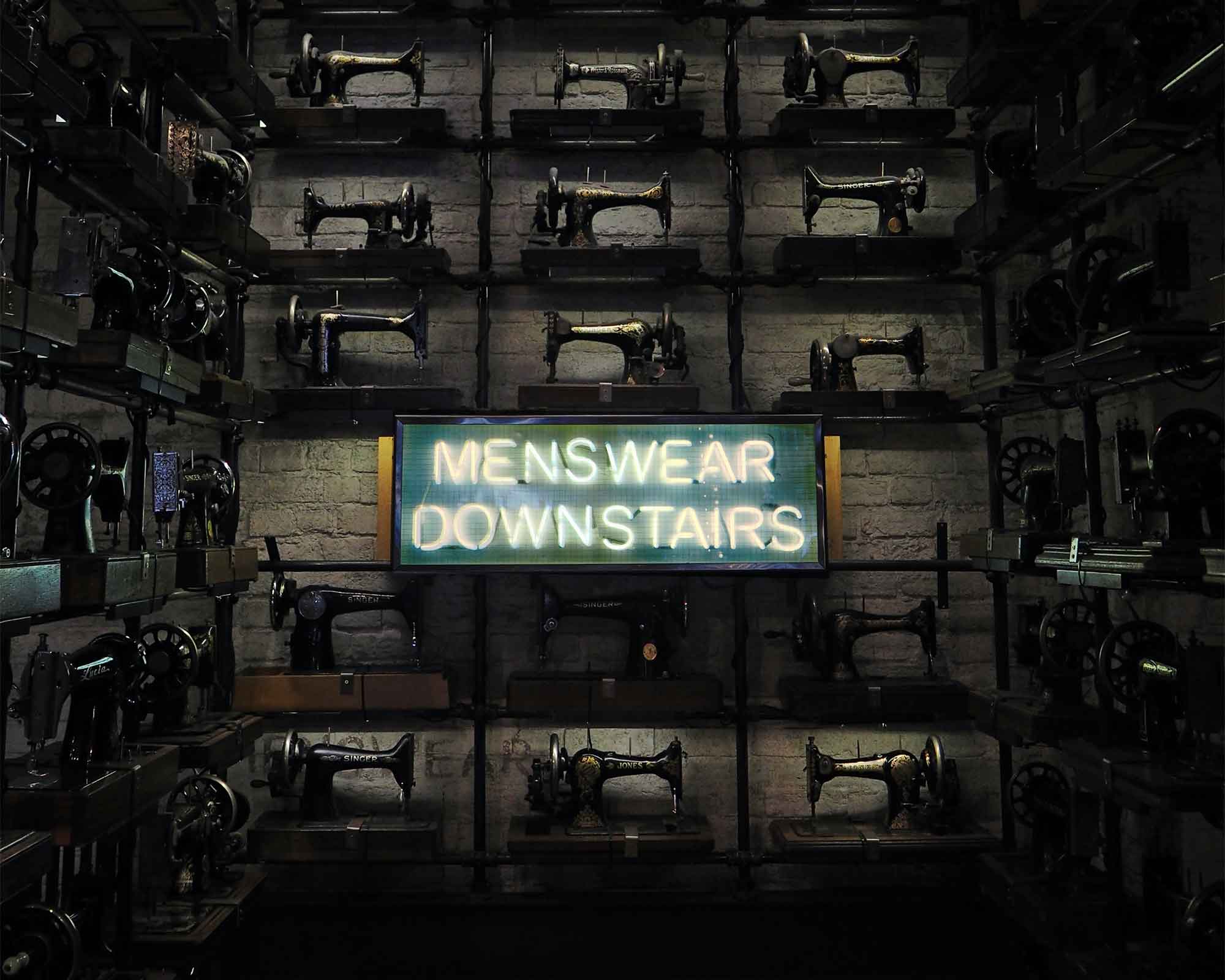Our editors curate highly rated brands that are first assessed by our rigorous ratings system. Buying through our links may earn us a commission—supporting the work we do. Learn more.
There are 108% more sustainable brands focused on womenswear than menswear, according to exclusive data from Good On You. Why do there seem to be so few sustainable menswear brands? Reporter Maggie Zhou investigates stereotypes and sustainable fashion beyond the cisgender binary.
Investigating fashion’s ‘eco gender gap’
The fashion sustainability space no longer caters for a hippy-dippy, hemp-fuelled minority. These days, even the worst-offending fast fashion brands advertise their sustainability slogans. As a result, we’ve become all too familiar with greenwashing. But even as sustainability has become a mainstream buzzword, the audience still seems overwhelmingly geared toward one group: cisgender women.
The sheer number of womenswear-focused brands makes this imbalance clear. A recent survey of the most sustainable fashion brands rated by Good On You has found there are more than twice as many sustainable womenswear brands when compared to brands selling menswear.
There’s a term for this disconnect: it’s the “eco gender gap”, as coined by Mintel in 2018, when their survey found that 71% of British women are trying to live more ethically and environmentally responsibly, as opposed to 59% of British men.
There are more than twice as many sustainable womenswear brands when compared to brands selling menswear.
It might make you wonder, is this a chicken-and-egg situation? Are men less inclined to be interested in sustainable fashion because there are fewer brands catering to their ethical desires? Or are there fewer sustainable menswear brands because of a limited demand among this demographic?
Of course, you can’t get too far along in answering these questions without addressing the binary itself: The “menswear”/”womenswear” concept dominating modern fashion makes little sense when we take clothes for the inanimate shards of fabric they are.
But the social construct of binary fashion has real-world consequences. Fashion marketing is particularly targeted toward cis women, while toxic masculinity limits the attention cis men generally pay to fashion, beauty, and so on. That’s saying nothing about the harm the policing of gendered fashion norms causes trans, queer, and gender-nonconforming people.
That’s why the eco gender gap is far from a trivial concern. Case in point: a truly sustainable fashion industry won’t be possible if “sustainability” remains a niche marketing tactic targeting only one segment of the population.
Womenswear dominates sustainable brands
Data on sustainable fashion indicates that womenswear dominates the sector. Good On You has rated more brands on sustainability issues than anyone else in the industry. In a recent survey of all brands Good On You has rated “Good” and “Great”, there are around 108% more brands focused on womenswear than there are menswear-focused brands.
The laziest interpretation—that women are inherently more interested in sustainability—is uncomfortably shallow. It’s also rooted in sexist stereotypes of femininity, which miss the more nuanced ways gender constructs influence sustainable fashion trends.
To investigate what’s really going on beneath the surface, I spoke to several experts in their field: Diane Martin, professor of Marketing at RMIT University; Courtney Holm, founder of sustainable brand A.BCH; and Sandy McIntyre, founder of Queerful.
A truly sustainable fashion industry won’t be possible if ‘sustainability’ remains a niche marketing tactic targeting only one segment of the population.
“The fashion industry in general is more focused on womenswear,” says Martin. “To the extent that fashion is gendered, then sustainable fashion is as well.”
Echoing Martin’s sentiment, the fashion sustainability space may be predominantly made up of womenswear-concentrated brands because this is the most financially successful choice. After all, women make 70-80% of all consumer purchasing decisions.
Holm—whose job means she overlaps with people from the textile industry, education, government, and the charity sector—says she sees an equal mix of men and women working professionally in the field. That changes when she looks at who the messengers are: “I find that the global conversations I follow tend to be led by women,” she says, adding that activists, social media personalities, and podcast hosts skew female.
“As to why this is, I think it’s probably that a lot of [cisgender heterosexual men] don’t think as much about the clothes they buy and wear; they might not even buy their own clothes,” Holm says. “I don’t think they don’t have the same societal pressures on their looks that women have.”
But this doesn’t mean that men don’t want—or aren’t trying—to source more sustainable clothing. Men represent only about 30% of Good On You’s users, but menswear searches account for around 70% of gender-focused searches. Given the overwhelming number of brands catering to women, that suggests that men are searching and filtering more to try and find a smaller number of brands offering sustainable menswear.
Is toxic masculinity the culprit here?
Across the board, research suggests women are more likely to partake in environmentally friendly actions—reflected in purchasing decisions, smaller carbon footprints, higher recycling rates, more climate-friendly diets (men’s meat-heavy diets cause 40% more climate emissions than women’s) and lower littering numbers.
“I feel that toxic masculinity has played a role in this,” McIntyre says. “Typically, men don’t find it appealing to shop [and] too often have had their clothing bought for them by their spouses or mothers. Why? Because men ‘hate’ shopping. But I want to ask, ‘is this because you’ve been told you hate it, or do you actually dislike the experience?’”
Anyone who wears clothing is a part of this system, whether they like it or not.
Courtney Holm – founder of A.BCH
Generally, fashion is viewed as an exclusive industry, where people don’t consider themselves part of the fashion system. It’s commonly filed next to “beauty” in the list of stereotypical feminine hobbies. But many are pushing back against this contrived narrative.
“We all want to look our best and should be given the opportunity to figure out what that means to [us]”, McIntyre says.
Holm—whose label A.BCH makes womenswear and menswear—goes a step further. She questions whether it is a gendered mindset, or whether people in general need to rethink the way they contribute to fashion.
“Anyone who wears clothing is a part of this system, whether they like it or not. A lot of people think that because they don’t engage in what they perceive to be ‘fashion’—ie shopping for new pieces regularly, keeping up with trends, following influencers for style ideas—they might be exempt from worrying about this stuff.”
In saying that, she tells me that across her customer and audience base, her clientele is consistently 85% women and 15% men.
“While [our male customers] don’t amount to the same numbers as our women customers, they tend to be quite particular, ask a lot of questions, and shop with us loyally over long periods of time. I do think more men need to care about a sustainable and equitable fashion industry,” Holm says.
It’s not far-fetched, then, to suggest that women make up the majority of people who shop ethical and sustainable fashion. But gender isn’t the only factor that influences this.
“Education, social class, context, and local ecology are also important factors in consumer choice”, she says. “[Outside of fashion] the idea that men are less interested in sustainability than women is not fully supported in the academic literature. In other consumer categories you may find the uptake in sustainable options is driven more by men,” she adds, pointing to the sale of electric vehicles like Teslas as an example.
It’s a distinction that speaks to the gendering of sustainable issues. Cishetero men can like electric vehicles without feeling like their masculinity is being questioned. Meanwhile, hardly anyone would call Elon Musk a sustainable fashion icon.
A more sustainable solution: degendering fashion
While sustainable fashion may predominantly target one side of the cisgender binary, the reality is that many people don’t fit into these rigid moulds of sex and gender—something Queerful’s McIntyre attests to.
“From the moment we’re born, our life is gendered. Right down to our clothing,” they say. “It’s a daily reminder that society doesn’t recognise those who live outside of the binary. The number of times I pick up ‘women’s’ clothing to then go into the ‘men’s’ change-room is astounding and, at first, embarrassing.”
The most sustainable solution of all might be ditching fashion’s preoccupation with rigid cisgender binary demographics. That’s something that many activists have been advocating for decades. Today it’s often known as the growing “degender fashion” movement, spearheaded by trans, nonbinary, and gender-nonconforming voices like the writer, performer, and speaker Alok Vaid-Menon.
From the moment we’re born, our life is gendered. Right down to our clothing.
Sandy McIntyre – founder of Queerful
Thankfully, there are finally many major brands releasing collections marketed to and for any gender—even if many of these collections are primarily designed by cishetero people.
“Fashion is slowly entering a more gender neutral space which I adore, with a great percentage of those being sustainable brands,” says McIntyre. It’s promising to see that this uptake mirrors queer folk’s interest in social justice issues. Research shows that those in queer communities will engage in an overall greater level of activism, including environmental activism.
But the solution to fashion’s eco gender gap can’t simply be adding “gender neutral” collections. There’s deeper work to do than just slapping unisex labels on an oversized sweater.
A.BCH’s Holm notes that inclusivity doesn’t begin and end with product offerings: “I think terminology could become more inclusive. Perhaps we need more great role models in the space to reach the people who don’t consider themselves part of the fashion system.”
The question I originally posed was: Where are the sustainable fashion brands focused on menswear? The question I am now left with is: Why do people feel disengaged in fashion sustainability, and how can we change that?
McIntyre ends our interview with a mantra I hope everyone can get on board with: “Fashion is fun, and for everyone. I repeat. Fashion is fun, and for everyone.”
Author bio:
Maggie Zhou is a Melbourne-based writer, podcaster, content creator, and slow fashion advocate. She currently holds the title Writer & Producer at Refinery29 Australia, and she’s written for publications such as ELLE, Marie Claire, MTV, and Fashion Journal. If she’s not writing about internet and culture trends, she’s tackling the perils of the fashion industry with intersectionality at the forefront of her advocacy. In 2021, she was nominated for Melbourne Press Club’s Student Journalist of the Year, and she sits on Melbourne Fashion Festival’s mentor panel for its Fashion Writing Program. Follow her on Instagram and Twitter.


















